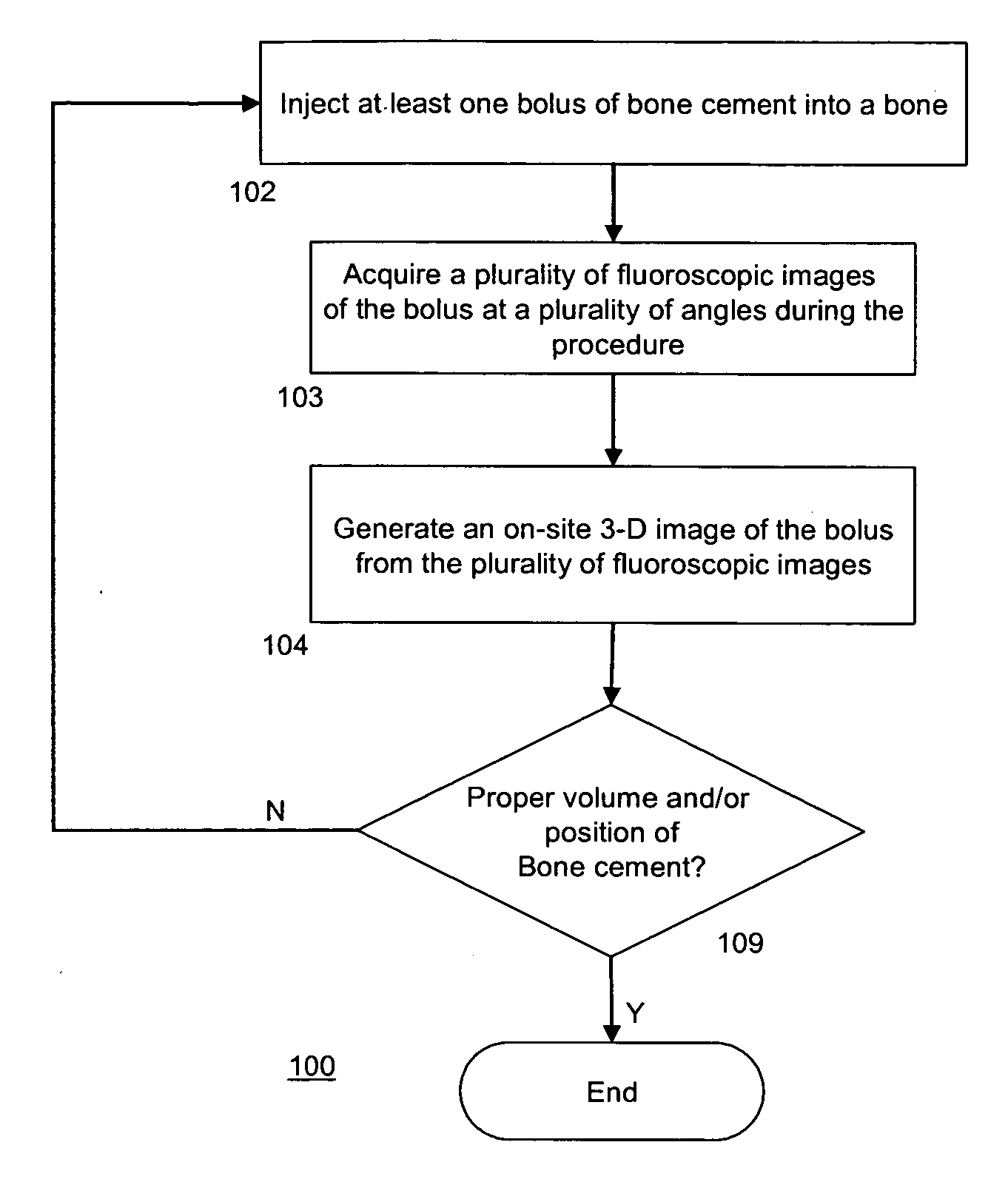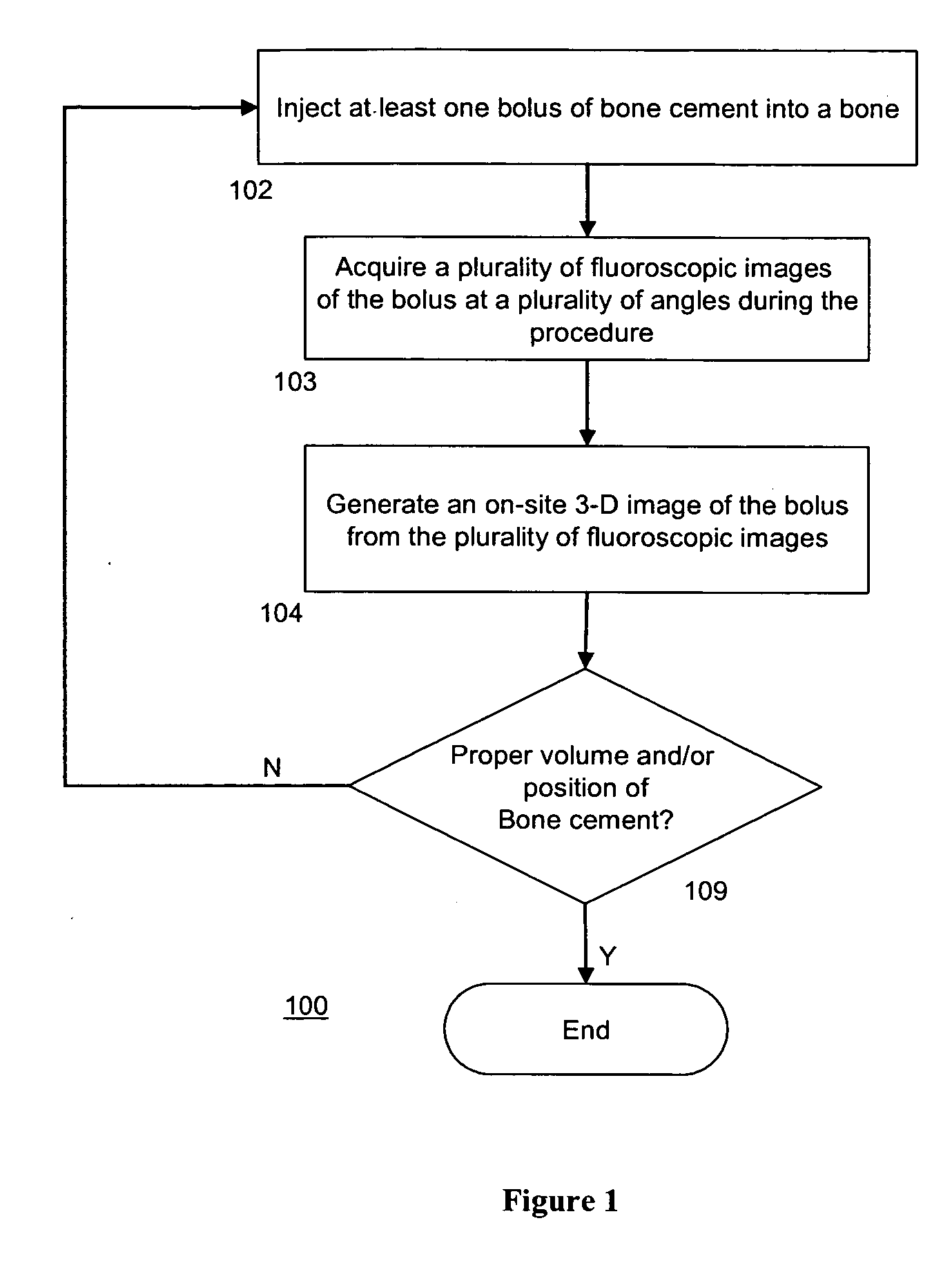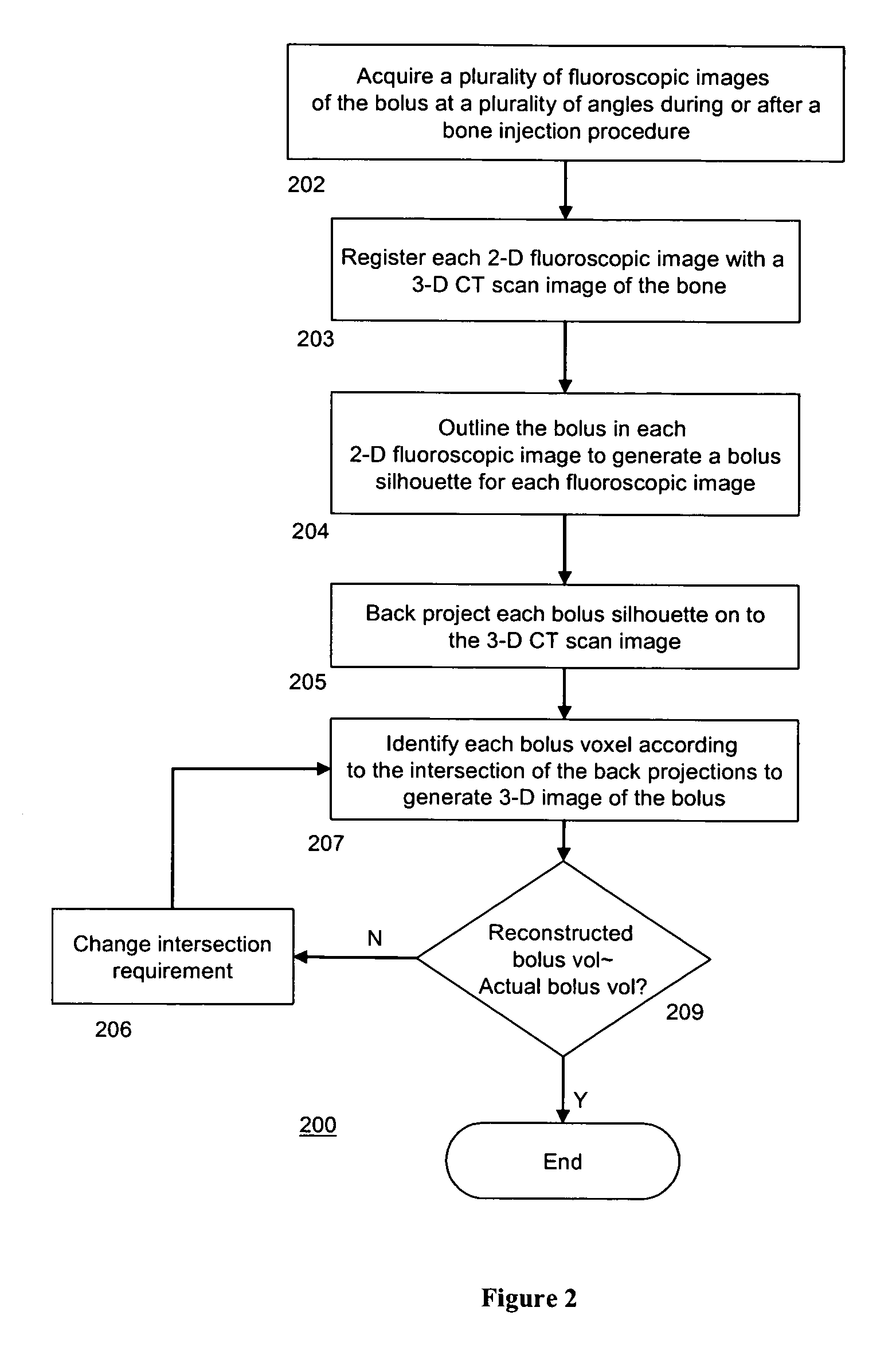Intra-operative 3-D reconstruction of bone cement boli using X-rays
- Summary
- Abstract
- Description
- Claims
- Application Information
AI Technical Summary
Benefits of technology
Problems solved by technology
Method used
Image
Examples
example
[0046] Six cadaveric spinal segments (T9-L4; Male, ages 63-88) from a coinciding study were analyzed. They were placed two at a time in a water bath and scanned in a clinical CT scanner with 1 mm transverse slices. Each specimen was then prepared by cutting off the L1-L3 segment and removing the intervertebral discs from each end. Vertebroplasty was then performed on each of the six 3-level segments; every L1 and L3 vertebra was then injected with 10 cc of PMMA, in a bi-pedicular injection scheme (two discrete injections, one through each lateral pedicle).
[0047] After treatment, each specimen was transferred to a cylindrical container with a stand and demarcated angles. The container was placed on a treatment table, and a fluoroscope projector was placed directly above in a fixed position. By rotating the container in fixed increments, 12 fluoroscopic X-ray images were taken evenly spaced angles of 15° over a 180° range, as opposite projections provide similar information. Each X-r...
PUM
 Login to View More
Login to View More Abstract
Description
Claims
Application Information
 Login to View More
Login to View More - R&D
- Intellectual Property
- Life Sciences
- Materials
- Tech Scout
- Unparalleled Data Quality
- Higher Quality Content
- 60% Fewer Hallucinations
Browse by: Latest US Patents, China's latest patents, Technical Efficacy Thesaurus, Application Domain, Technology Topic, Popular Technical Reports.
© 2025 PatSnap. All rights reserved.Legal|Privacy policy|Modern Slavery Act Transparency Statement|Sitemap|About US| Contact US: help@patsnap.com



